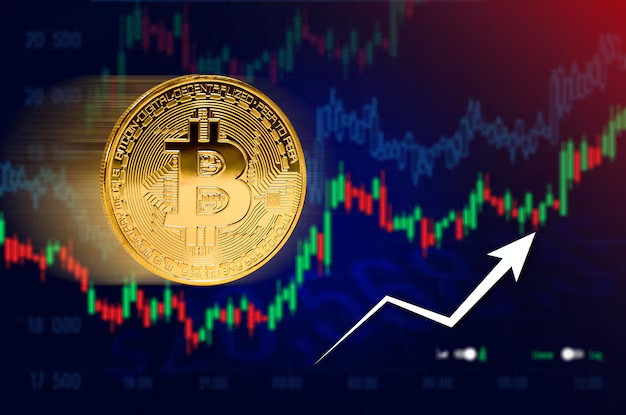Bitcoin's Historical Peaks: Exploring the Highs of Digital Gold
In the world of cryptocurrencies, Bitcoin often stands as the kingpin, the digital gold that investors and tech enthusiasts have flocked to since its mysterious inception in 2009. Given its volatile nature, one frequent question arises: "When did Bitcoin peak?" Understanding Bitcoin's peak is not just about pinpointing a specific day or price; it involves exploring the circumstances and trends surrounding these highs. Let's delve into Bitcoin's prominent peaks and what they unveil about the cryptocurrency landscape.
Understanding Bitcoin’s Peak
Bitcoin's peaks are frequently associated with speculative hype, economic events, and changes in the regulatory landscape. A Bitcoin peak can refer to its all-time high price, but contextually, it also denotes moments when Bitcoin captivates public attention.
The All-Time Highs
Bitcoin's price highs are often tied to significant periods of upward momentum, fueled by various factors such as market demand, technological advancements, and broader economic conditions.
December 2017: The year 2017 witnessed Bitcoin reaching an unprecedented milestone, closing the year with a price just shy of $20,000. This rally was marked by increased media attention and mounting interest from retail investors.
November 2021: Bitcoin hit another monumental peak, crossing the $68,000 mark. This rally was characterized by growing institutional interest, the rise of decentralized finance (DeFi), and global economic concerns, including inflation.
These moments exemplify how varied factors interplay to drive Bitcoin’s price action.
Factors Influencing Bitcoin Peaks
Market Speculation: The cryptocurrency space is highly speculative. Spikes in Bitcoin's price often correlate with speculative buying, sometimes followed by equally sharp declines as investor sentiment shifts.
Institutional Adoption: The involvement of major financial institutions often signals significant events in Bitcoin's price trajectory, bolstering investor confidence and demand.
Macroeconomic Trends: Economic factors, such as inflation fears or currency devaluations, can drive people towards assets perceived as safe havens, such as Bitcoin.
Technological Developments: Innovations and upgrades within the blockchain can enhance Bitcoin’s utility or security, influencing its price.
Regulatory News: Announcements around legal frameworks can impact Bitcoin's price, often sparking rallies if they imply greater acceptance or causing dips if perceived negatively.
Beyond Price: Bitcoin's Influence and Adoption Peaks
While price peaks are significant, Bitcoin also experiences peaks in its cultural and technological influence. These periods are marked by enhanced adoption and integration into the broader financial system.
Peaks in Bitcoin's Adoption
Increasing Transactions: As more businesses accept Bitcoin, transaction volume increases, highlighting its adoption as a transaction medium rather than just a speculative asset.
Blockchain Technology Innovations: The enduring interest in Bitcoin has spurred broader blockchain advancements, impacting industries beyond finance, from supply chains to secure voting systems.
Institutional Embrace: Over recent years, mainstream companies have begun holding Bitcoin on their balance sheets, signaling increased trust in its long-term value proposition.
Navigating the Peaks: What Can Consumers Take Away?
Recognizing Bitcoin's historical peaks offers a prism through which investors can gauge not only market psychology but also functional applications of Bitcoin.
Key Takeaways 📌
🧠 Educate Yourself: Engage with educational resources to understand the cryptocurrency's mechanics and the risks associated with investment.
📊 Diversify Investments: Avoid putting all eggs in one basket — consider diversification to mitigate risk.
🛡️ Stay Informed on Regulations: Keep abreast of the regulatory landscape as it can significantly impact Bitcoin valuation and usability.
⏳ Long-Term Viewpoint: Consider long-term holding strategies to potentially benefit from Bitcoin’s growth and adoption trends over time, rather than reacting to daily market fluctuations.
Bitcoin’s Future: What Lies Ahead?
Bitcoin's future peaks are anticipated amidst growing debates on environmental impacts, technological scalability, and evolving regulations. Emerging innovations like the Lightning Network promise transactions that are faster and cheaper, addressing long-standing scalability criticism.
Potential Challenges and Opportunities
Sustainability Concerns: As global awareness of environmental issues intensifies, Bitcoin's energy consumption is scrutinized. Innovations in eco-friendly mining could shape its future appeal.
Scalability Solutions: Technological advancements like sidechains might offer solutions to Bitcoin’s transaction speed and cost challenges.
Central Bank Digital Currencies (CBDCs): As nations explore digital currencies, Bitcoin’s role vis-à-vis these government-backed initiatives will be intriguing, impacting both its adoption and regulation.
Institutional Evolution: The continual acceptance and investment into Bitcoin by industries may further legitimize it as a stable asset class in the eyes of traditional markets.
The Evolving Landscape: An Uncertain Yet Promising Journey
Bitcoin's journey presents an amalgam of challenges and opportunities. As it builds closer ties with traditional financial systems and navigates regulatory hurdles, its potential role as a global digital asset continues to expand.
Summary Insights 🌟
🚀 Monitor Technological Progress: Technological evolution, such as the integration of scalability solutions, will likely impact Bitcoin’s usability and adoption.
🌍 Consider Environmental Impact: Investors and companies may increasingly evaluate Bitcoin based on its environmental footprint, influencing investment decisions.
📈 Look for Institutional Signals: Keep an eye on institutional participation as a barometer of Bitcoin's ongoing acceptance and legitimacy.
In examining the peaks of Bitcoin — both in price and influence — it becomes clear that its story is far from finished. Whether as a speculative asset, a store of value, or a tool for financial inclusion, the future holds numerous possibilities for Bitcoin enthusiasts and investors alike. Whether you're a seasoned investor or just curious about cryptocurrency, understanding Bitcoin's past peaks offers a valuable lens through which to view its potential futures.
